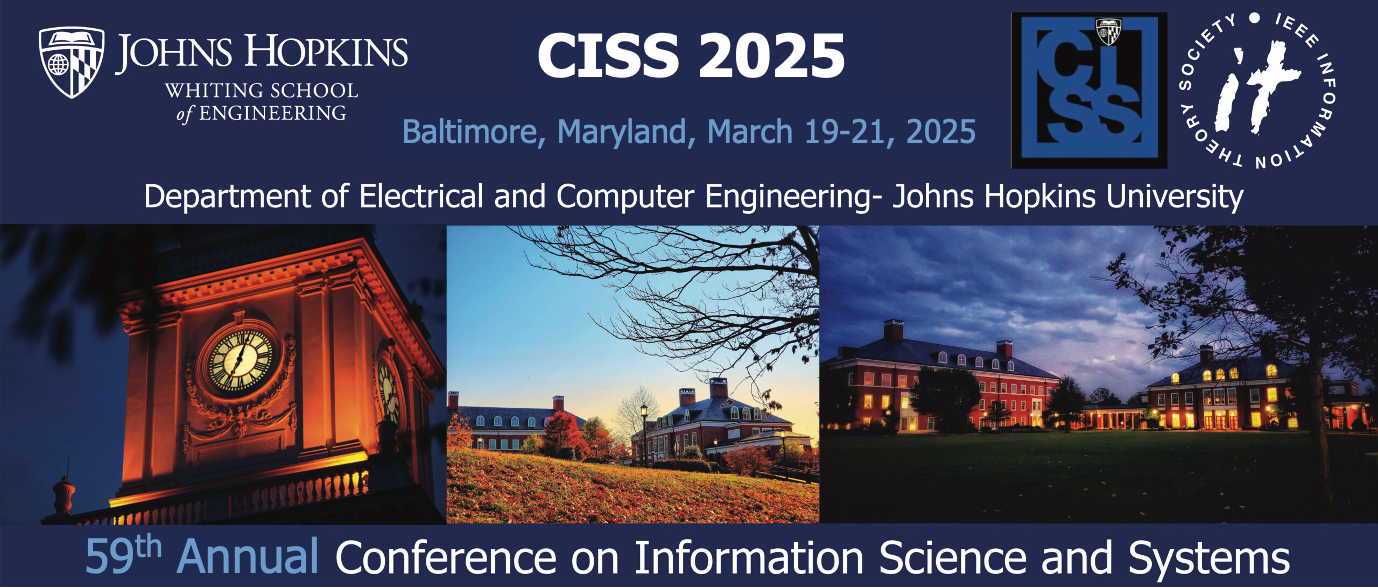Machine Learning II
B4L-C: Machine Learning II
Session Type: LectureSession Code: B4L-C
Location: Room 3
Date & Time: Thursday March 23, 2023 (14:00-15:00)
Chair: Anqi Liu
Track: 5
| Paper No. | Paper Name | Authors | Abstract |
|---|---|---|---|
| 3006 | An Interpretable Joint Nonnegative Matrix Factorization-Based Point Cloud Distance Measure | Hannah Friedman{1}, Amani Maina-Kilaas{1}, Julianna Schalkwyk{1}, Hina Ahmed{2}, Jamie Haddock{1} | In this paper, we propose a new method for determining shared features of and measuring the distance between data sets or point clouds. Our approach uses the joint factorization of two data matrices X, Y into non-negative matrices X = AB , Y = AC to derive a similarity measure that determines how well the shared basis A approximates X, Y. We also propose a point cloud distance measure built upon this method and the learned factorization. Our method reveals structural differences in both image and text data. Potential applications include classification, detecting plagiarism or other manipulation, data denoising, and transfer learning. |
| 3204 | C-Diego: An Algorithm with Near-Optimal Sample Complexity for Distributed, Streaming PCA | Muhammad Zulqarnain, Arpita Gang, Waheed U. Bajwa | The accuracy of many downstream machine learning algorithms is tied to the training data having uncorrelated features. With the modern-day data often being streaming in nature, geographically distributed, and having large dimensions, it is paramount to apply both uncorrelated feature learning and dimensionality reduction techniques in this scenario. Principal Component Analysis (PCA) is a state-of-the-art tool that simultaneously yields uncorrelated features and reduces data dimensions by projecting data onto the eigenvectors of the population covariance matrix. This paper introduces a novel algorithm called Consensus-DIstributEd Generalized Oja (C-DIEGO), which is based on Oja’s method, to estimate the dominant eigenvector of a population covariance matrix in a distributed, streaming setting. The algorithm considers a distributed network of arbitrarily connected nodes without a central coordinator and assumes data samples continuously arrive at the individual nodes in a streaming manner. It is established in the paper that CDIEGO can achieve an order-optimal convergence rate if nodes in the network are allowed to have enough consensus rounds per algorithmic iteration. Numerical results are also reported in the paper that showcase the efficacy of the proposed algorithm. |
| 3220 | Advancing Temporal Multimodal Learning with Physics Informed Regularization | Niharika Deshpande, Hyoshin Park, Venktesh Pandey, Gyugeun Yoon | Estimating multimodal distributions of travel times from real-world data is critical for understanding and managing congestion. Mixture models can estimate the overall distribution when distinct peaks exist in the probability density function, but no transfer of mixture information under epistemic uncertainty across different spatiotemporal scales has been considered for capturing unobserved heterogeneity. In this paper, a physics-informed and -regularized prediction model is developed that shares observations across similarly distributed network segments across time and space. By grouping similar mixture models, the model uses a particular sample distribution at distant non-contiguous unexplored locations and improves TT prediction. Compared to traditional prediction without those updates, the proposed model’s 19\\% of performance show the benefit of indirect learning. Different from traditional travel time prediction tools, the developed model can be used by traffic and planning agencies in knowing how far back in history and what sample size of historic data would be useful for current prediction. |
